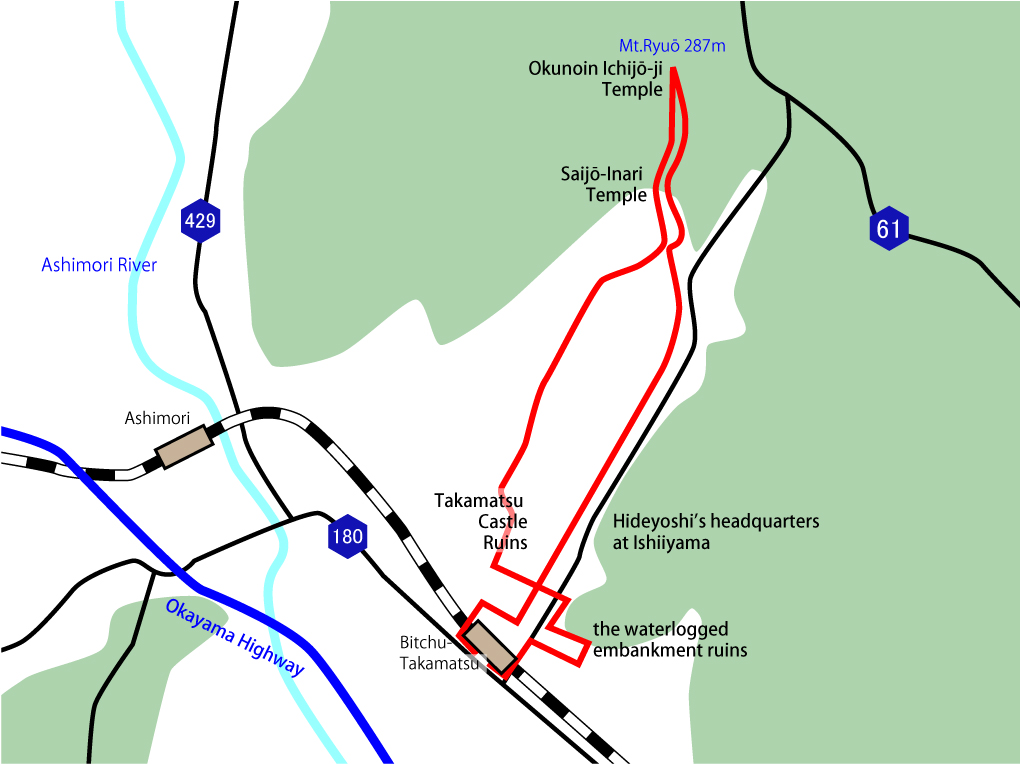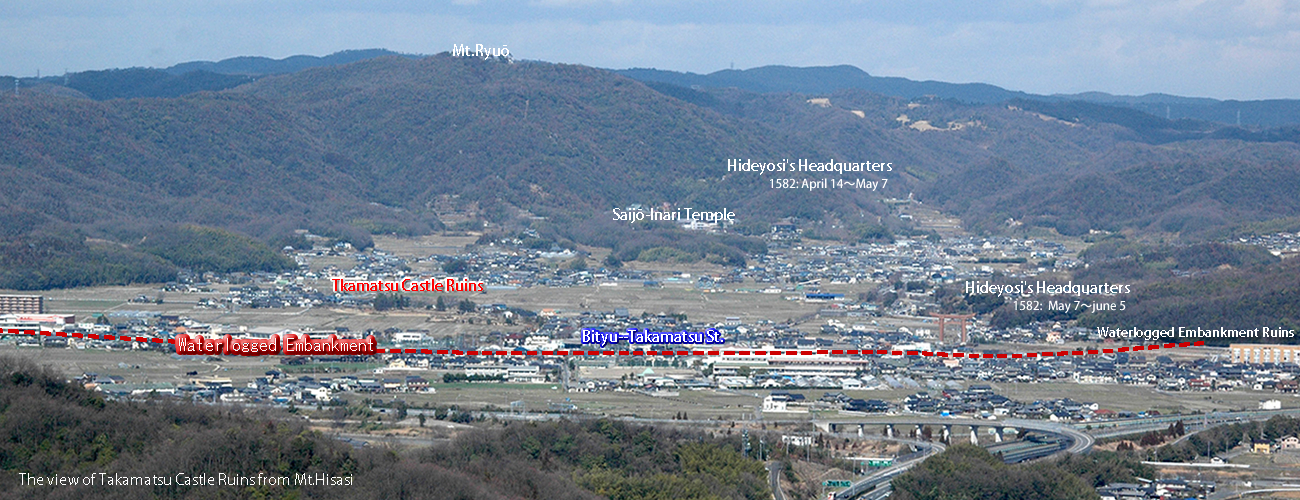From Bitchu Takamatsu Station to the Takamatsu Castle Water Attack Embankment Site
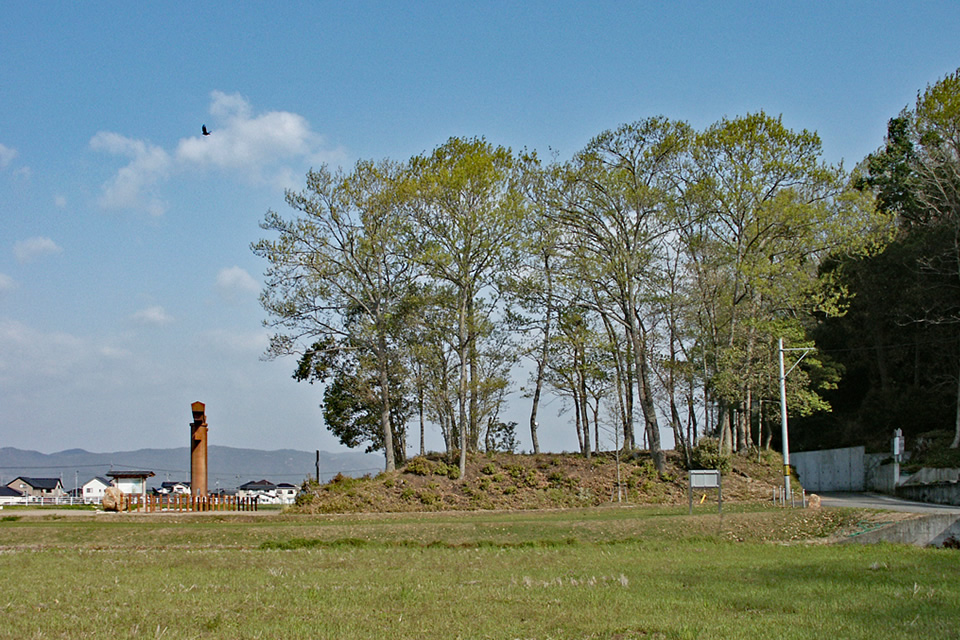
Get off at Bitchu Takamatsu Station, cross the railway crossing on the east side, and pass through the massive concrete torii gate. Cross the irrigation channel, turn right, and descend 300 meters on the bicycle path to reach the foothills where the Takamatsu Castle Water Attack Embankment Site is preserved.
Hashiba Hideyoshi (later known as Toyotomi Hideyoshi), who received the order from his lord Oda Nobunaga to attack the Tyūgoku region, struggled to capture Bitchu Takamatsu Castle and made a decisive strategic choice of water attack. It is said that from here to the present-day Ashimori Station, a 3-kilometer embankment was built in approximately 12 days.
The grave of Shimizu Muneharu and the place of Seppuku
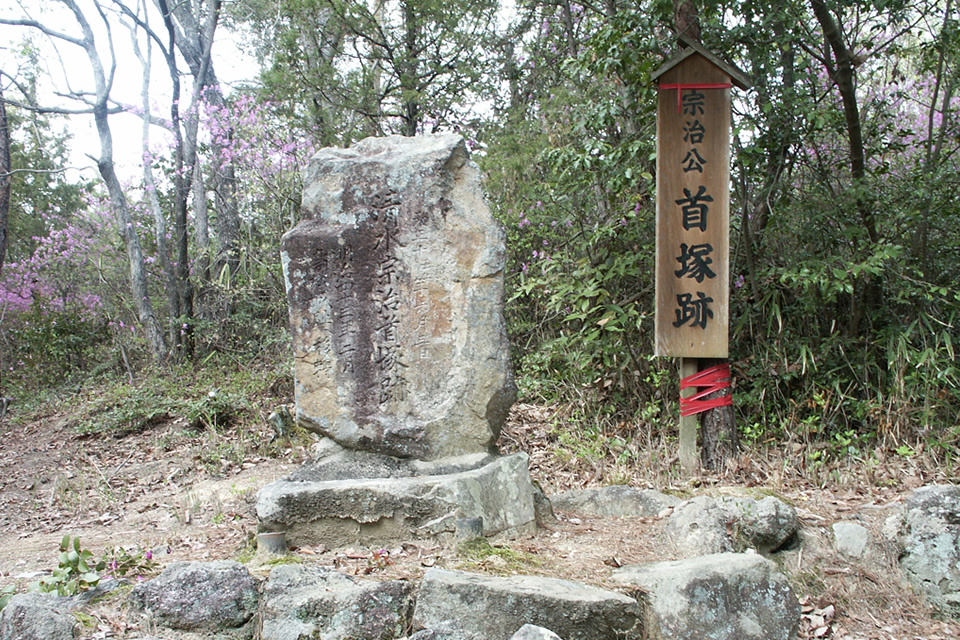
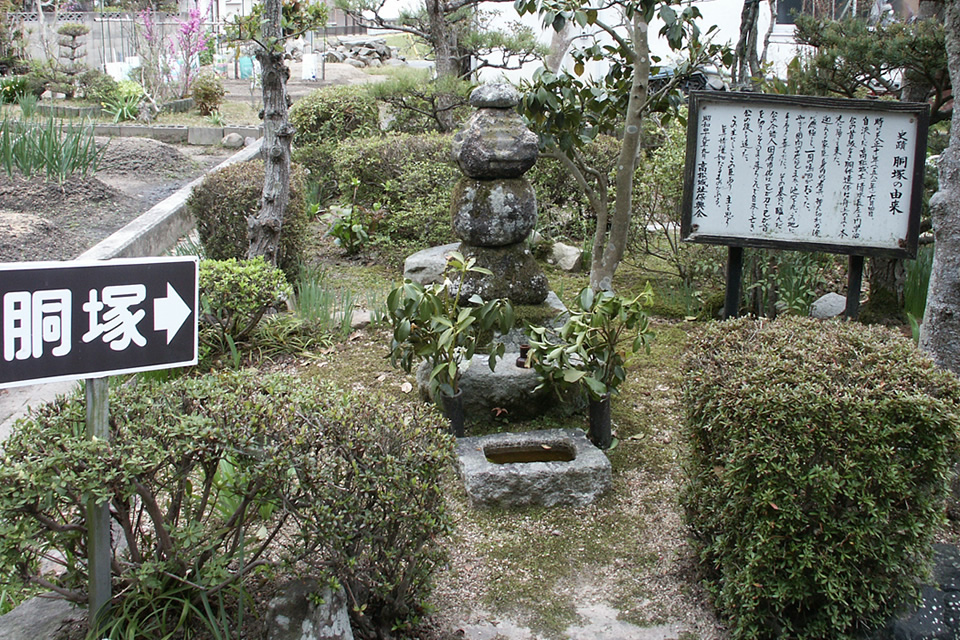
If you walk west along the mountain-side path of the Water Attack Embankment Site, you will enter a settlement. At the end, turn north, and you will find Jihōin Temple. At the northern corner of Jihōin Temple, turn right and ascend the mountain path to the east, and you will reach the site of Shimizu Muneharu's grave.
During that time, Jihōin Temple was located deep in the mountains, and Hideyoshi's headquarters were established there. Shimizu Muneharu's severed head was handed over to Hideyoshi's forces and buried in a corner of the southeastern part of Jihōin Temple's grounds after examination. His body was taken back to Takamatsu Castle and buried beneath a pond in the northwest of the castle.
The grave of Shimizu Muneharu, which was originally located deep in the mountains, was relocated to the Takamatsu Castle ruins in the 42nd year of the Meiji era for the convenience of visitors.
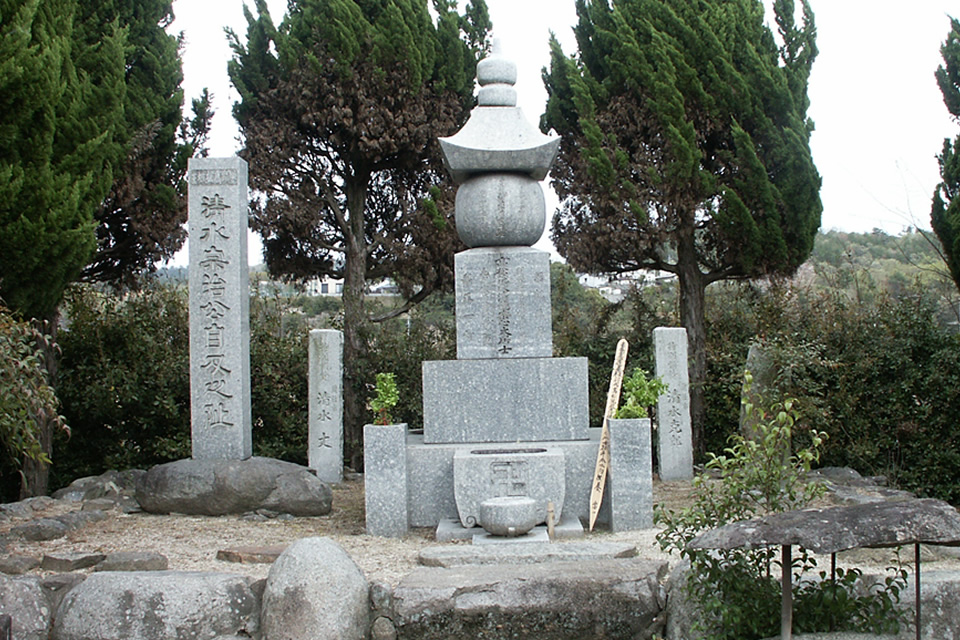
This time, turn left and head towards the Takamatsu Castle ruins. Cross the road leading to Saijō-Inari Temple, pass south of Aoyama Dental Clinic, and you will see Seiyu-ji Temple on your right. Along the fence of Seiyu-ji Temple, go east, and you will come to the spot where Shimizu Muneharu performed seppuku on a small boat. There, a memorial structure for praying for the repose of the souls of warriors from both sides has been erected.
Shimizu Muneharu's grave at the Takamatsu Castle ruins
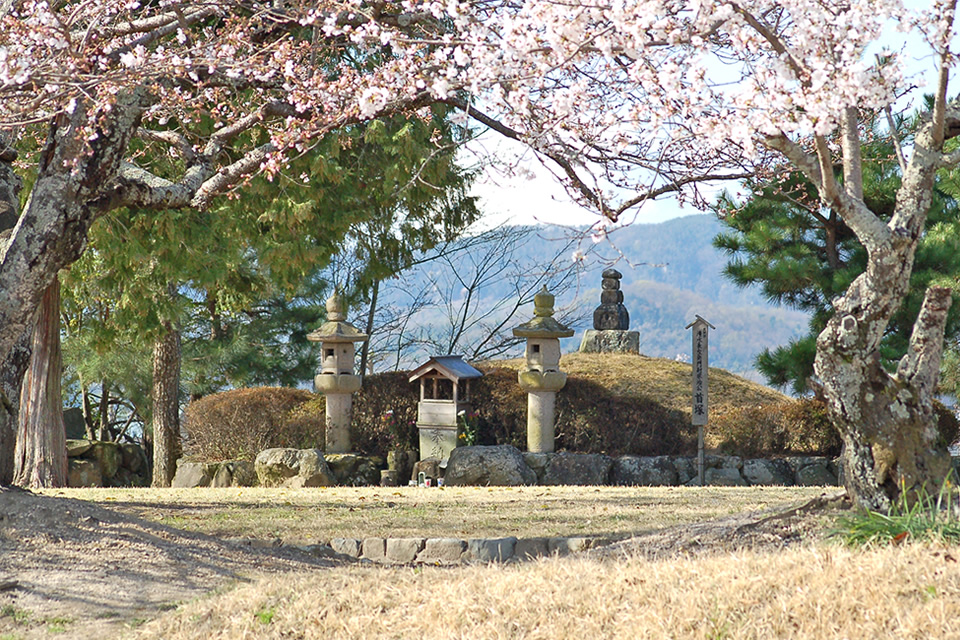
Bitchu Takamatsu Castle, under the lordship of Shimizu Muneharu, was an outpost of the powerful daimyo Mōri in the Chugoku region. The castle was a flatland castle utilizing the surrounding wetlands.
In the 10th year of the Tensho era (1582), Toyotomi Hideyoshi's army of 30,000 troops, surrounding the submerged Takamatsu Castle, faced off against the Mōri clan's reinforcements of 40,000 troops, who kept their distance on the western side. Upon learning of the Honnoji Incident on June 2nd, Hideyoshi agreed to a peace treaty proposed by the Mōri clan. The terms of the treaty were as follows: "The seppuku of castle lord Shimizu Muneharu, surrendering Takamatsu Castle, and in return, the lives of 5,000 castle soldiers would be spared." On June 4th, Muneharu and his companions set out in a small boat, exchanging cups of sake, and in the presence of Hideyoshi's army watching over, he performed seppuku.
Immediately, he swiftly returned to Himeji Castle and defeated Akechi Mitsuhide in the Battle of Yamazaki. This battle solidified Hideyoshi's position as the successor to Oda Nobunaga. For Akechi Mitsuhide, Hideyoshi's quick turnaround from the Chūgoku-Ōgaeshi was an unexpected setback. The scene of the water attack on Takamatsu Castle is always featured in NHK's historical drama series on the Sengoku period as a pivotal moment in history.
Takamatsu Castle Ruin Museum
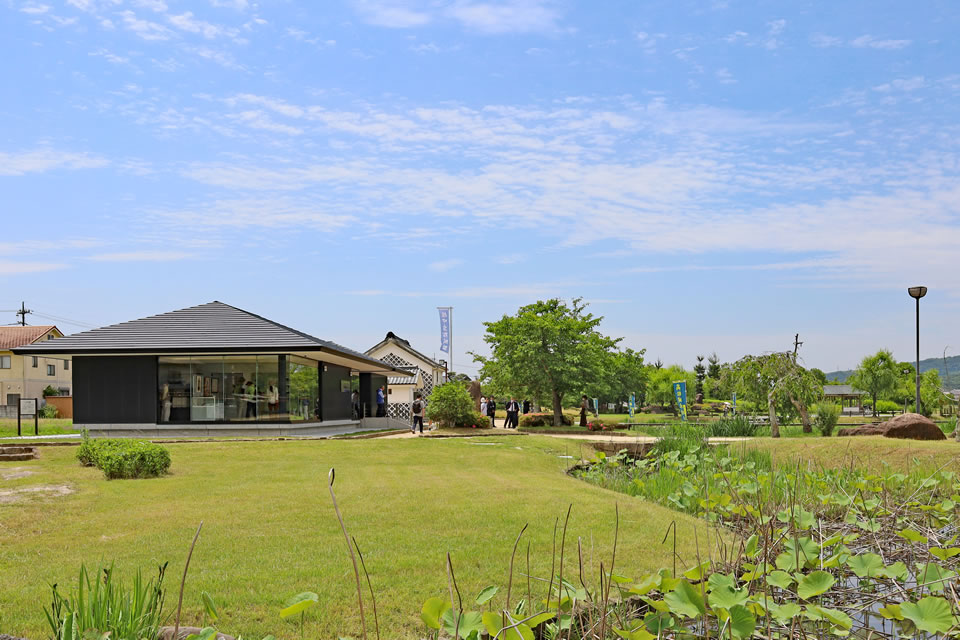
The Takamatsu Castle Ruin Museum was newly opened on June 4, 2023, in commemoration of the 441st memorial of Shimizu Muneharu.
It provides clear explanations of the water attack on Bitchu Takamatsu Castle through panels and videos, targeting visitors from both domestic and international locations. (Closed on Mondays)
Monument to the Death Poem of Shimizu Muneharu
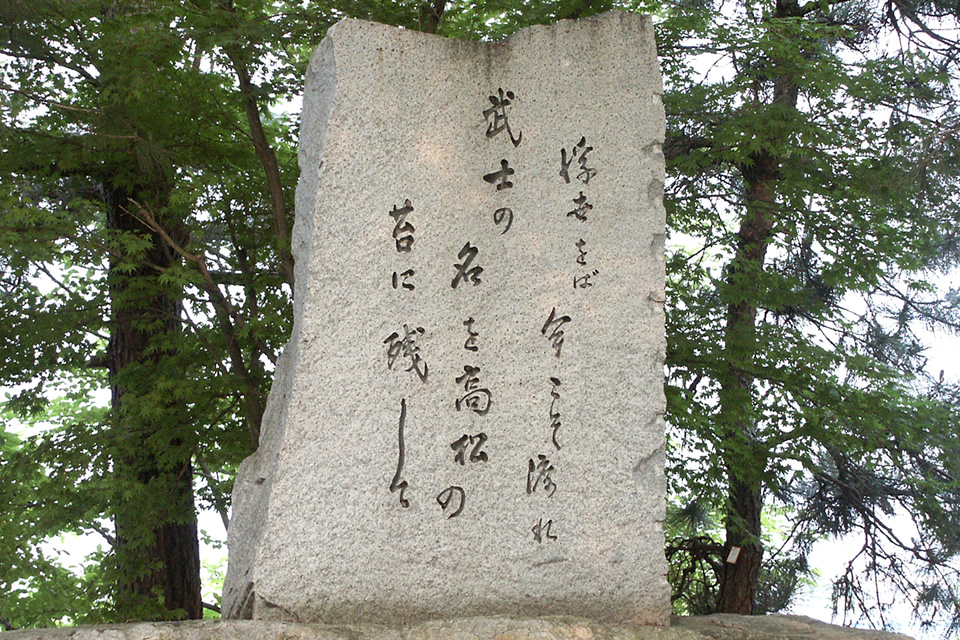
In remembrance of the virtues of Lord Shimizu Muneharu, who sacrificed his own life to save the 5,000 loyal soldiers defending the castle, an annual Muneharu Festival is held on the first Sunday of June, near the anniversary of his passing, at the Takamatsu Castle ruins.
Cross over this transient world now,
O samurai,
Leaving behind the name
In the moss of Takamatsu.
A monument with the death poem of Shimizu Muneharu, written by former Governor Nagano, has been erected.
In Takamatsu Castle Ruins Park, there is a museum that exhibits materials related to the water attack strategy.
"Muneharu Lotus" at the Takamatsu Castle Ruins
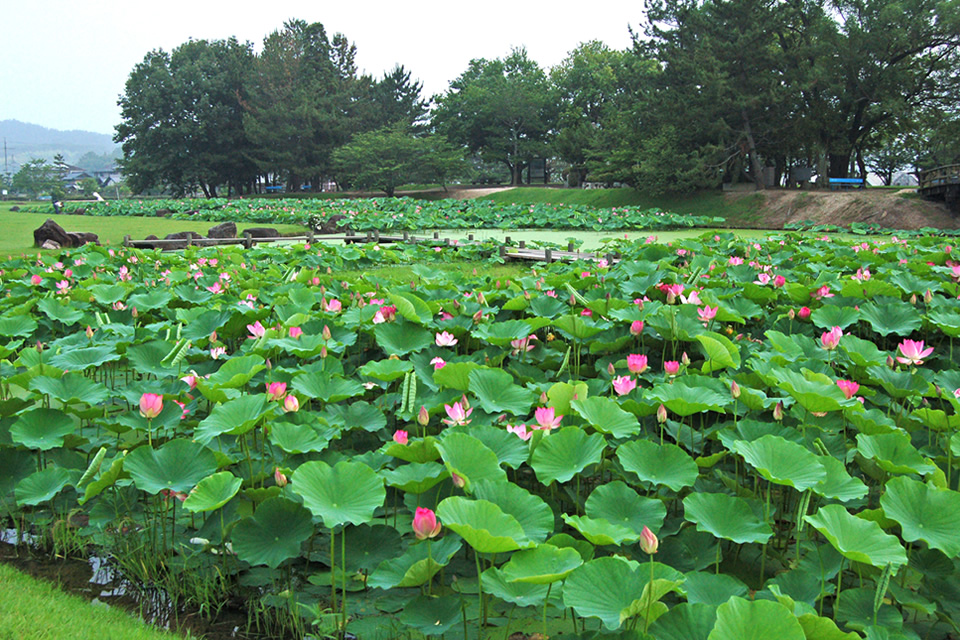
As part of the development of the Takamatsu Castle ruins, a moat was constructed around the site, which naturally became a lotus pond where beautiful flowers bloom. It is believed that lotus seeds buried in the layers of the earth sprouted when the area was excavated.
Locally, it is affectionately known as "Muneharu Lotus," in honor of Lord Shimizu Muneharu.
The best time to see the lotus in full bloom is in the latter half of July, and in the early morning, you can often spot photography enthusiasts enjoying the sight.
Irises and Japanese irises in the Takamatsu Castle ruins park
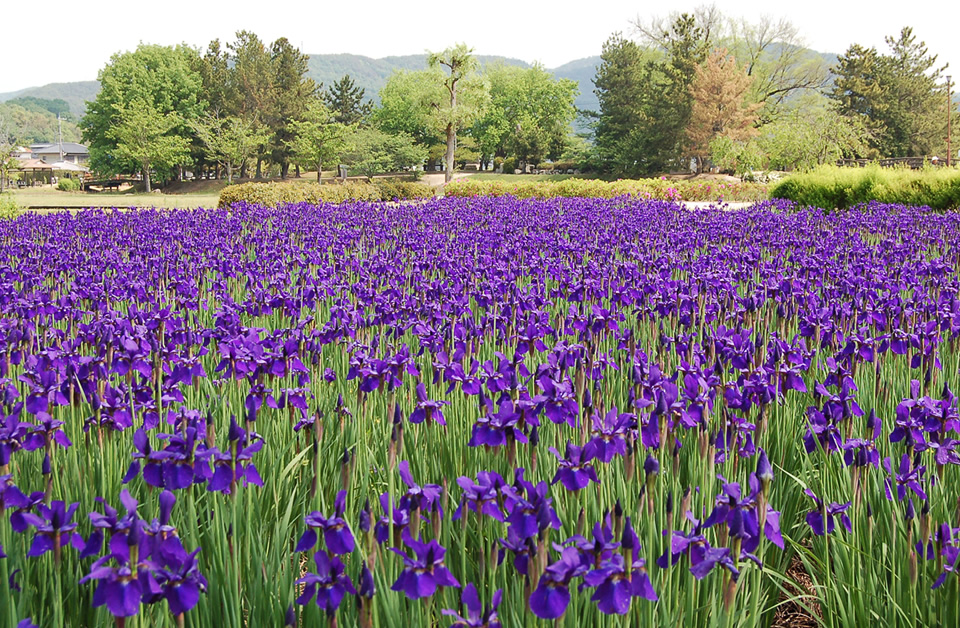
The cherry blossoms in the castle ruins were scattered by the wind and rain two days ago, and the ground was covered in petals. The surrounding area is well-maintained as a park, and the "ayame" irises in early to mid-May and the "shoubu" irises in early to mid-June are beautiful. There is a lawn square, making it an ideal spot to spread out a picnic during a hike. A separate page features the seasonal flowers of Takamatsu Castle ruins park.
Main Hall of Saijō-Inari Temple
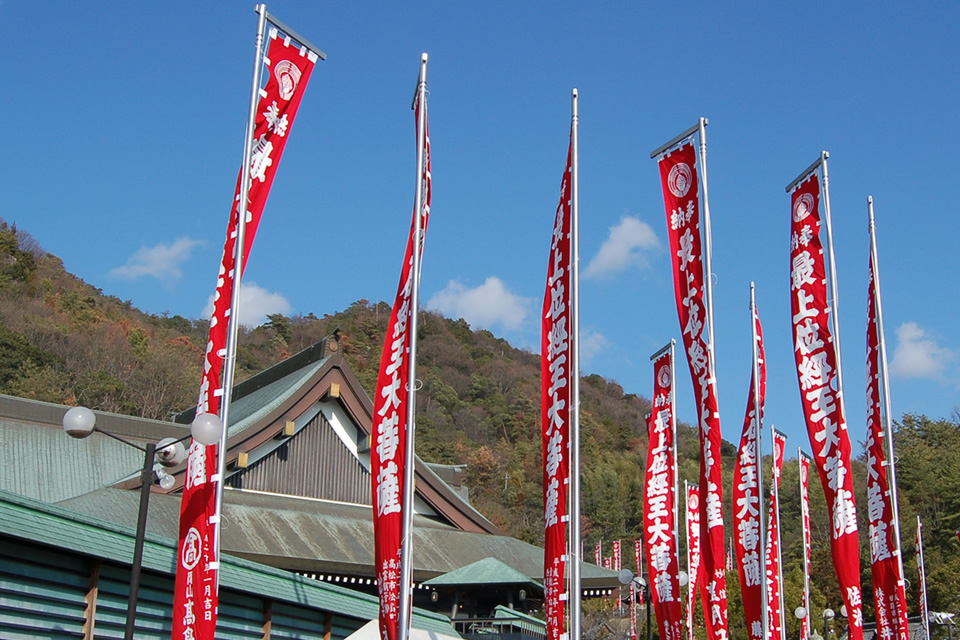
There is a bicycle path that connects from the west side of Takamatsu Castle ruins to Saijō-Inari Temple in the north. The bicycle path is beautifully maintained, winding around reservoirs and the foothills of the mountains, preserving the atmosphere of the countryside. Dandelions bloom along the roadside, and this area is known for its "Japanese Dandelions." To enter the grounds of Saijō-Inari Temple, you can take the side road on the west.
Saijō-Inari Temple, one of Japan's three major Inari shrines, thrives as the deity of business prosperity. During the New Year's season, it attracts the largest number of worshippers in the prefecture. The magnificent main hall, built with reinforced concrete, exudes a commanding presence. The old thatched-roof main hall, constructed during the Edo period, is located on a high ground on the north side, surrounded by subsidiary shrines.
Okunoin Ichijō-ji Temple at the summit of Mt. Ryuō
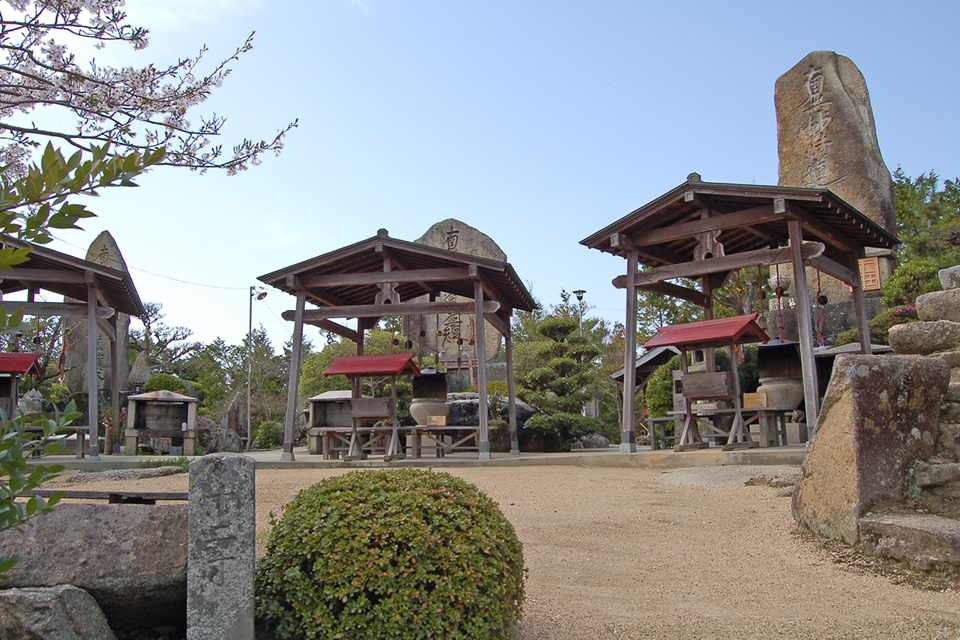
Visit Okunoin Ichijō-ji Temple at the summit of Mt. Ryuō (287 meters) and experience its vibrant atmosphere. Adjacent to the former main hall of Saijō-Inari temple, there is a stone staircase that leads to Okunoin Ichijō-ji Temple. Ascend the steep steps at a leisurely pace, accompanied by the beautiful azaleas blooming on the rocky terrain. As you reach the end of the staircase near the 7th landing, you'll find a square with stone torii gates and a pair of stone lanterns. Turning left, you'll find the path to Ryuō Pond and Ryūsen-ji Temple.
Both sides of the approach to Okunoin Ichijyō-ji Temple are adorned with various-sized stone monuments that continue all the way to the summit. At the mountaintop, numerous large stone monuments create a surreal scene. While there is now a road accessible from the north side, it's intriguing to ponder how they transported those large boulders in the past.
This summit is known as a place for rain prayers, where the Eight Great Dragon Kings are enshrined. You can admire the magnificent sunrise from the "shukubo" accommodations on the eastern side of this temple.
From the Niō-mon Gate to the temple town
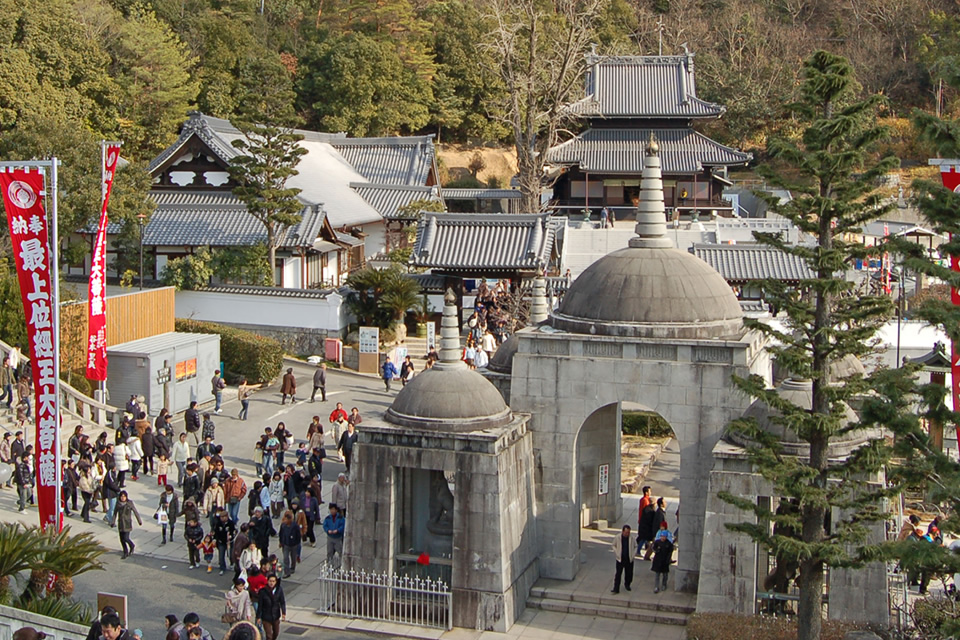
For those with good stamina, choosing the route from Ryūsen-ji Temple to Ashimori Station is also a good option. This time, we will retrace our steps and descend to the main hall of Saijō-Inari Temple.
On the way back, we will descend the front stone steps from the main hall, pass through the Indian-style stone Niō-mon gate, and enter the temple town lined with souvenir shops. Shops displaying items such as "Kitchō," "Daruma dolls," "Maneki-neko," "Fox figurines," "Kamidana," and the famous "Yuzu Senbei" create a unique atmosphere. Unfortunately, today being a weekday, many shops had their shutters down, and the vibrant atmosphere of the New Year's visit was absent.
We will walk along the straight promenade that stretches from Inari to Bitchu Takamatsu Station to return. This path is said to have been the former railway line connecting Bitchu Takamatsu Station to Inari, which was in operation before the war. It has been repurposed as a approach to the temple.
